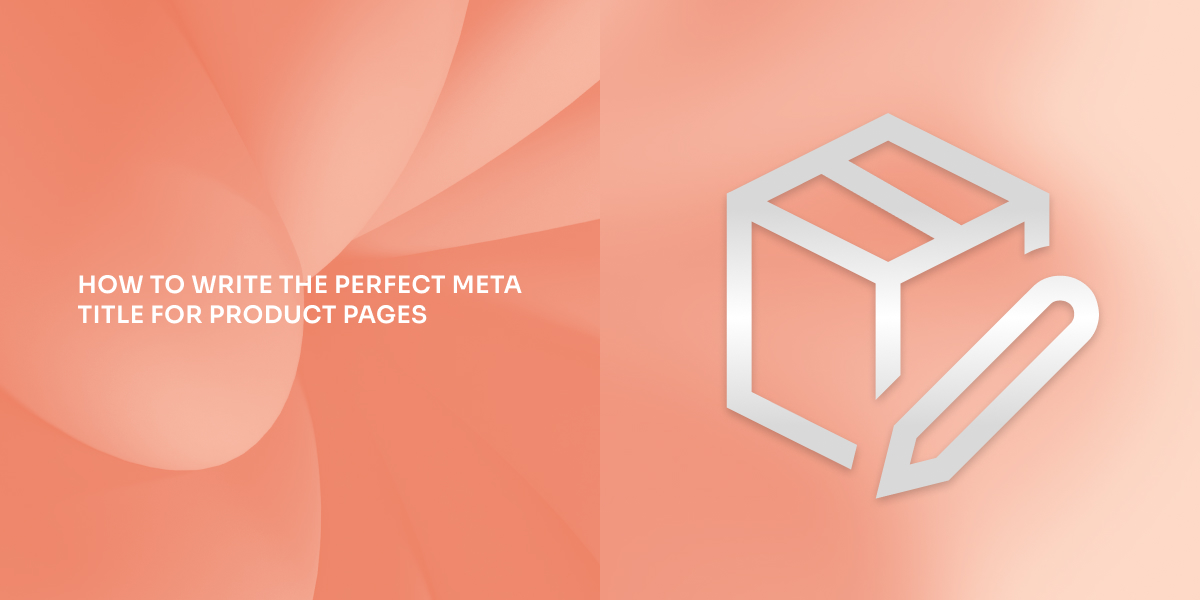How to write the perfect meta title for product pages

A Danish entrepreneur who owns WriteText.ai and 1902 Software Development, an IT company in the Philippines where he has lived since 1998. Peter has extensive experience in the business side of IT and AI development, strategic IT management, and sales.

Writing the perfect meta title (also known as a “page title”) for ecommerce product pages requires striking the right balance between SEO performance, user appeal, and concise messaging. A well-optimized meta title helps boost search engine rankings (e.g., on Google or Bing), increase click-through rates (CTR), and clearly communicate the product’s value to potential buyers.
Although meta titles primarily appear in search engine results pages (SERPs), browser tabs, and social shares, they also play an indirect role in chatbot-driven discovery, such as Answer Engine Optimization (AEO). While chatbots like those powered by Google or Bing may not display meta titles directly, these titles still contribute to visibility by enhancing the search engine’s underlying index. They support snippet extraction, improve content relevance, and help AI systems generate more accurate summaries and citations.
Understand the purpose and key principles
- SEO-focused. Titles should incorporate relevant keywords to match user search intent (e.g., "wireless noise-cancelling headphones" instead of just "headphones").
- User-friendly. They need to be readable, compelling, and persuasive to encourage clicks. Avoid keyword stuffing; make it natural.
- Unique. Each product page must have a distinct title to avoid duplicate content issues.
- Catchy and informative. Highlight what makes the product stand out, like key features, benefits, or urgency (e.g., "Best-Selling" or "On Sale").
- Mobile-optimized: Since most e-commerce traffic is mobile, ensure titles display well without truncation.
Ideal length
- Recommended range. 50-60 characters (including spaces) is the sweet spot. This ensures the full title shows in Google SERPs without being cut off (Google truncates at around 600 pixels, which roughly equals 50-60 characters depending on the font).
- Minimum: At least 30 characters to provide enough detail.
- Maximum: Avoid exceeding 60-70 characters, as longer titles may get ellipsis (...) in results, reducing visibility.
- Why this length? Shorter titles rank better and have higher CTR. For example, a study from Conductor (2025) notes titles between 285-575 pixels (about 30-60 characters) perform optimally. If it's too short, it lacks keywords, or it is too long, it gets truncated.
- Tip: Use tools like Google's SERP simulator or character counters to test. Remember, length in pixels matters more than characters (e.g., "W" takes more space than "i").
Including keywords
- Yes, absolutely include them. Place primary keywords (the main search terms users might type, like "men's running shoes") at the beginning of the title for maximum SEO impact. This helps with ranking as search engines prioritize early keywords.
- Use 1-2 primary keywords per title.
- Incorporate long-tail keywords for specificity (e.g., "waterproof men's running shoes for trails" targets niche searches with less competition).
- Research keywords using tools like Google Keyword Planner or Ahrefs—focus on high-volume, low-competition terms.
- Or use WriteText.ai, which automatically suggests relevant keywords based on product data and research. It develops a keyword ladder strategy that prioritizes low-competition terms to build early traction and gradually shifts focus to higher-value keywords as the page gains authority. As performance improves, meta titles and other SEO content are automatically updated—ensuring your product pages stay optimized without manual intervention.
- Avoid overstuffing: Don't repeat keywords unnaturally (e.g., bad: "Running Shoes Men's Running Shoes Waterproof"). Google penalizes this.
- Example: If selling sneakers, use "Nike Air Zoom Pegasus 39 Men's Running Shoes" instead of just "Sneakers."
Including your company name or brand
- When to include? Include the brand name if it's relevant and adds value, especially for branded products or if your company is well known (e.g., to build trust). Place it at the end to prioritize keywords.
- Pros: Boosts brand recognition and can improve CTR for loyal customers.
- Cons: If space is limited, skip it to avoid pushing keywords to the back (Google gives more weight to keywords that appear at the beginning of a title).
- Best for: High-end or branded items. For generic products, omit it unless it's your store's private label.
- Example: "Wireless Earbuds with Noise Cancellation - Apple AirPods Pro" (brand at the end).
Ordering of elements
- Recommended structure: Follow a logical order that prioritizes SEO and readability: [Primary Keyword] | [Key Feature/Descriptor] | [Brand/Company Name] | [Optional Modifier like Size/Color/Sale].
- Start with the most important keyword to capture search intent.
- Add descriptors (e.g., size, color, material) if they differentiate the product.
- End with brand or company name.
- Use separators like pipes (|) or dashes (-) for clarity (e.g., "Product - Feature | Brand").
- Why this order? Search engines scan from left to right, so front-loading keywords (i.e., placing them nearer the beginning) improves relevance. It also makes titles scannable for users.
- Examples:
- Good: "Men's Waterproof Hiking Boots - Timberland | Free Shipping" (Keywords first, brand second, modifier last; ~50 chars).
- Bad: "Buy Now: Timberland Company Hiking Boots for Men Waterproof" (Brand first, buried keywords; less SEO-friendly).
- Variant for Sales: "Black Friday Deal: iPhone 16 Pro - 128GB | Apple" (Adds urgency).
Additional best practices
- Make it actionable. Use words like "Best," "Top-Rated," or "Buy" sparingly to entice clicks, but only if truthful.
- Capitalization: Use title case (e.g., "Wireless Noise-Cancelling Headphones") for professionalism—avoid all caps (shouty) or all lowercase (unprofessional).
- A/B testing: Test variations on a small set of pages and monitor CTR in Google Search Console.
- Common mistakes to avoid: Duplicate titles across products, ignoring mobile display, or neglecting updates for seasonal keywords (e.g., add "Christmas Gift" in December).
- Tools for optimization: SEMrush, Moz, WriteText.ai, or Google's own guidelines for e-commerce SEO.
By following this, your product meta titles should rank higher, attract more traffic, and convert better. If your ecommerce platform (e.g., Shopify) auto-generates titles, customize them manually for the best results.